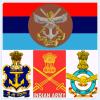Weathering Heights: India Launches INSAT-3D Meteorological Satellite
On July 26, 2013 India’s dedicated meteorological satellite INSAT-3D was successfully launched into a Geosynchronous Transfer Orbit (GTO) by Ariane-5 VA-214 launch vehicle from Kourou, French Guiana. This satellite has been designed and developed by India Space Research Organization (ISRO). The process of orbit raising maneuvers is under progress to place it in the 36,000 km high Geostationary Orbit.






